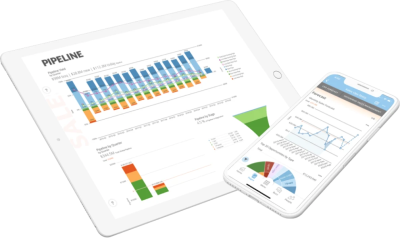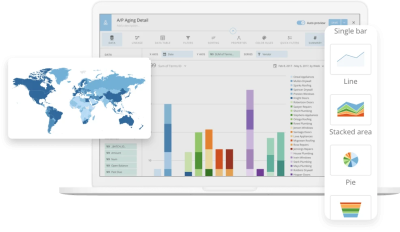How to supercharge your marketing analytics with a BI platform
A business intelligence (BI) platform is a software application that allows you to analyze data from multiple sources to help you make better business decisions. A BI platform can provide insights into all aspects of your business, from customer behavior to financial performance.
A BI platform is the answer if you’re looking for ways to supercharge your marketing analytics. With a BI platform, you can gain insights into how well your marketing campaigns are performing and identify areas where you could be making improvements.
You can also use data from your BI platform to create custom reports and dashboards that give you a snapshot of your business at any given time.
There are many different BI platforms on the market, so choosing one that best meets your needs is essential. This guide will walk you through selecting a BI platform and show you some of the best options available.

What is a BI platform, and what are its benefits for marketing analytics?
A business intelligence (BI) platform is a software application that allows you to analyze data from multiple sources to help you make better business decisions. A BI platform can provide insights into all aspects of your business, from customer behavior to financial performance.
A BI platform is the answer if you’re looking for ways to supercharge your marketing analytics.
With a BI platform, you can gain insights into how well your marketing campaigns are performing and identify areas where you could be making improvements. You can also use data from your BI platform to create custom reports and dashboards that give you a snapshot of your business at any time.
You can use a BI platform to track your marketing ROI, understand what’s working and what’s not, and optimize your campaigns for better results.
What are the different types of BI platforms?
There are four main types of BI platforms: self-service, embedded, enterprise, and cloud-based.
1. Self-service BI platforms are designed to be used by business users with little or no technical knowledge. These platforms typically have easy-to-use interfaces that allow users to quickly create reports and dashboards.
2. Embedded BI platforms are embedded into other applications, such as customer relationship management (CRM) or enterprise resource planning (ERP) software. These platforms offer tight integration with other applications and can provide valuable insights into business data.
3. Enterprise BI platforms are designed for large organizations with complex data needs. These platforms offer a wide range of features and can be customized to meet an organization’s specific needs.
4. Cloud-based BI platforms are hosted in the cloud and can be accessed from anywhere. These platforms are typically more affordable than other types of BI platforms and offer flexibility and scalability.
These types aren’t mutually exclusive, and many tools fit multiple categories. For instance, self-service, cloud-based tools are very popular among small and mid-sized businesses, while many enterprise tools offer embedded features.

Why use a BI tool for marketing analytics?
There are many different BI platforms on the market, so it’s important to choose one that best meets your needs. A BI platform can offer marketers several advantages over traditional marketing analytics tools, including the ability to:
Access data from multiple sources
A BI platform can help you collect data from a variety of sources, including social media, your website, other business applications, and more. This gives you a more complete picture of your customers and their behavior.
For example, you might use web analytics data to track how customers interact with your website, social media data to understand what they’re saying about your brand, and customer survey data to identify areas of improvement.
Analyze data in real-time
With a BI platform, you can analyze data as it comes in, allowing you to quickly identify trends and make decisions accordingly. This is in contrast to traditional marketing analytics tools, which can take days or weeks to process data.
For companies that need to make decisions quickly, real-time data analysis can be a critical advantage.
Visualize data in an easy-to-understand format
A BI platform can help you visualize data in a way that is easy to understand and share with others. This is important because it helps you communicate your findings to decision-makers in your company. When data is presented in a visually appealing format, it’s easier for people to understand and act on it.
Create custom reports and dashboards
A BI platform allows you to create custom reports and dashboards that only show the information you need. This is helpful if you want to track specific KPIs or create reports for different organizational stakeholders.
For instance, you might create a dashboard that shows your marketing ROI or a report that compares the performance of different marketing channels. This way, you can easily share the information you need with the people who need it.
How to select a BI platform
When it comes to business intelligence (BI) platforms, there are a lot of choices on the market. So how do you go about selecting the right one for your organization? Here are a few tips:
1. Define your needs
The first step is to define your needs. Ask yourself questions such as:
- What data do you want to analyze?
- What questions do you need to answer?
- What reports or dashboards do you want to create?
Once you know what you need, you can start narrowing down your options. You can then compare the features of different BI platforms to see which ones best meet your needs.
2. Consider your budget
BI platforms can vary widely in price, so it’s important to consider your budget when making a selection. There are both free and paid options on the market, so you should be able to find something that fits within your budget.

3. Evaluate the features
When looking at different BI platforms, be sure to evaluate the features of each one. Some features that might be important to you include:
- The ability to connect to your data sources: If you want to analyze data from your sources, you’ll need a BI platform that can connect to those sources. For instance, if you’re going to analyze social media data, you’ll need a platform that can connect to social media APIs.
- Real-time data analysis: If you need to make decisions quickly, you’ll want a platform that offers real-time data analysis.
- Easy-to-use interface: You’ll need to be able to use the BI platform to create reports and dashboards, so an easy-to-use interface is essential.
- Visualization tools: The platform you choose should offer visualization tools that will help you communicate your findings to others.
- Customizable reports and dashboards: The ability to create custom reports and dashboards is another important feature to look for.
4. Try it out
Once you’ve narrowed down your options, try out each BI platform you’re considering. Most BI platforms offer free trial periods, so you can test out their features and see how they work for your organization. Even vendors that don’t offer trial periods generally offer demos, so you can at least see the tool in action.
These are just a few tips to help you select the right BI platform for your needs. You can find a platform that will help you get the most out of your data by evaluating your options. But platform selection is just the first step—once you have a platform, you need to put it to use.
5. Test and implement
Once you have decided on a platform, it is important to test how it works with your data sources and business processes. Many BI platforms offer free trial periods so that you can do this. If the platform meets your needs, then you can make your purchase and start implementing it within your organization.
The most important thing is to find a platform that works for you and your data. With the right platform, you can make better decisions, improve your operations, and drive your business forward.
How BI helps you transform data into action
A cloud-based BI platform can help you turn data into action. It connects to all your data sources, so you can get a complete view of your business. It then transforms all that data into insights that you can act on.
With a cloud-based BI tool, you can:
- Connect to any data source
- Get real-time insights
- Visualize data in an easy-to-understand way
- Build custom reports and dashboards
- Share information with others
If you’re looking for a tool that can help you make better decisions, consider investing in a BI tool. Marketing analytics is just the tip of the iceberg.
Check out some related resources:

AI Readiness Guide

The 11 Best Big Data Analytics Tools in 2025






